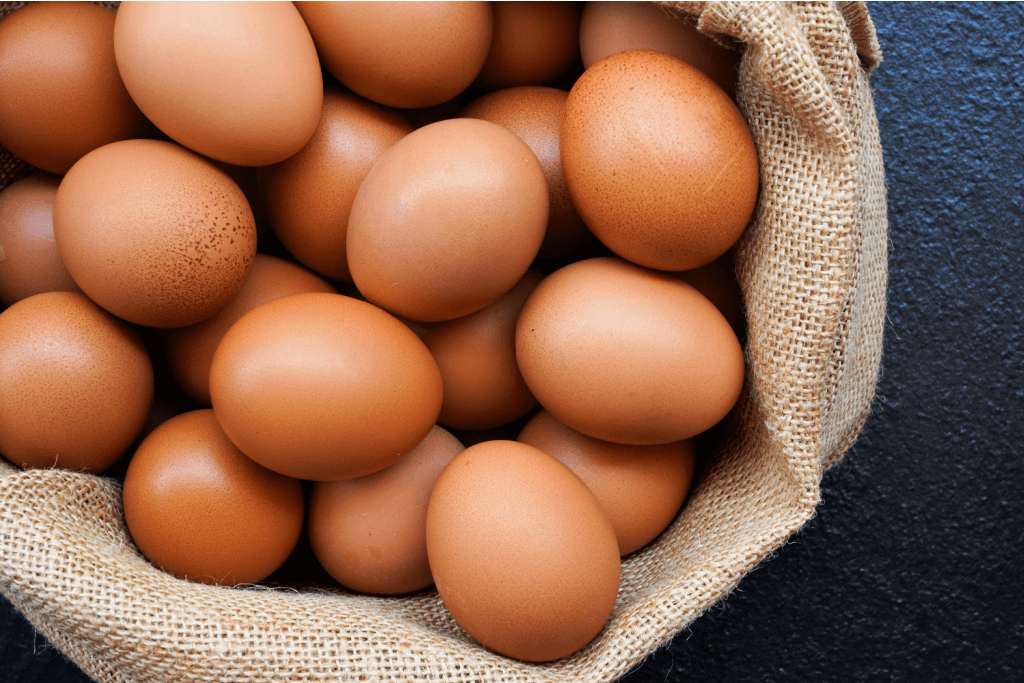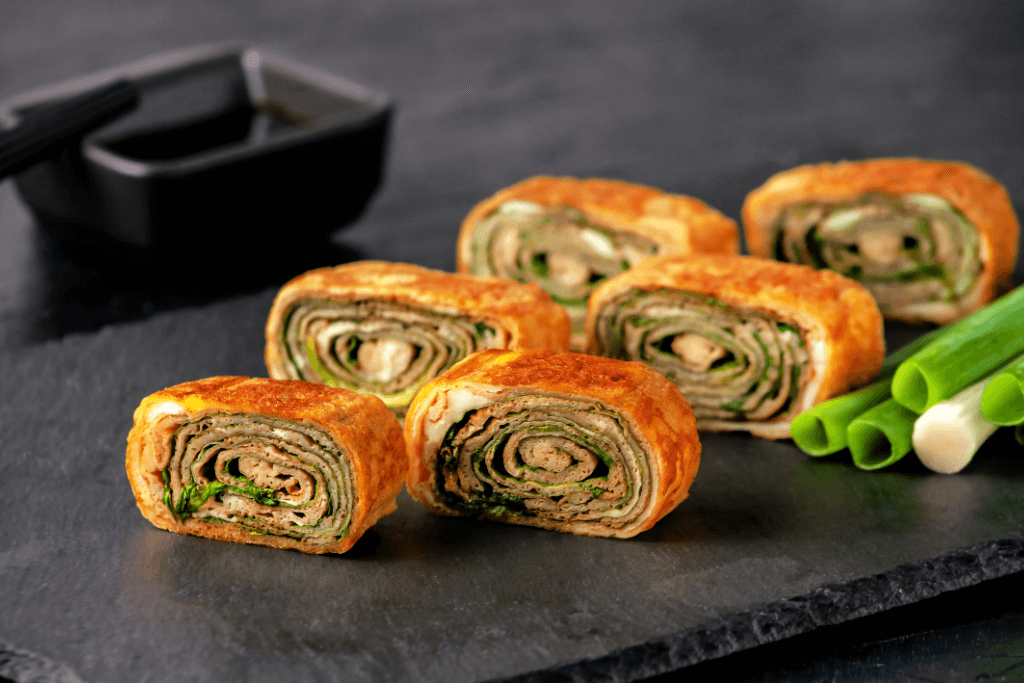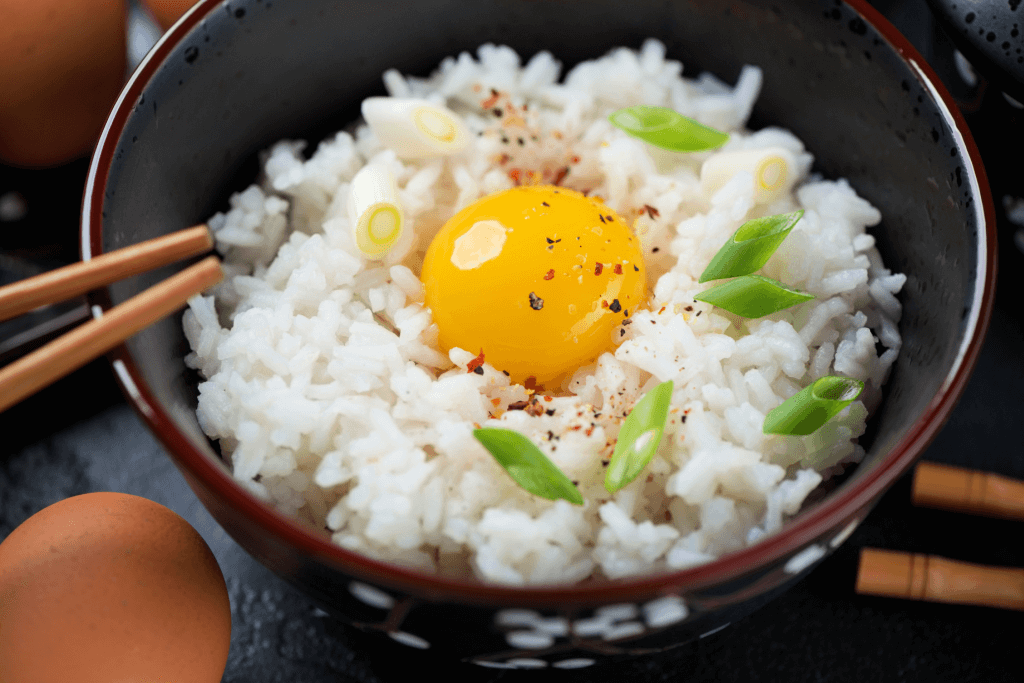egg dishes
Egg Dishes: Seven Best Ones from Japan You Should Try!
Karina Ikedo
Posted on December 13, 2023
Share:

When people think of egg dishes, many think of a hearty breakfast like scrambled eggs, sandwiches, and more. However, in Japan, there is a unique take on egg cuisine. As an ingredient with rich nutrients, various cooking methods, and affordability, eggs deserve to be a staple of Japanese cuisine.
Don’t let the raw egg part scare you, though. These dishes are not only perfectly safe to eat but also delicious! From dishes with raw eggs cooked in hot spring water to slightly sweet, rolled omelets. Here are the best egg dishes from Japan that you won’t regret trying!
Chawanmushi
Chawanmushi (steamed in a teacup) is a delicate, savory egg custard. It is a unique custard type made with savory rather than sweet ingredients. Chawanmushi is typically served as an appetizer or main course at restaurants. This silky custard is made by cooking dashi (fish and kelp stock), eggs, and salt until smooth. Then, different types of proteins, such as shrimp, chicken, and mushrooms, are added to the custard.

It’s one of the few Japanese cuisines traditionally eaten with a spoon. This dish is excellent, eaten either warmed or cooled, making it perfect for all seasons! It’s believed that the dish originated in Kyoto and Osaka during the Kansei period, later spreading to Edo and Nagasaki.
Tamagoyaki
The perfect way to prepare eggs to take with you for lunch! Tamagoyaki (grilled eggs) is a slightly sweetened rolled omelet that stacks several thin layers of slow-cooked egg. Sugar, Japanese soy sauce, or sometimes even sake (Japanese rice wine) is often added for flavor. Tamagoyaki is often made into a rectangular shape, making it easier to pick up with chopsticks. The shape also comes in handy when neatly fitting them into bento boxes!

Other than bento, tamagoyaki is also commonly served as part of a traditional breakfast in Japan. With a delicate and fluffy texture, tamagoyaki melts in your mouth as you chew. Because it’s a standard way to serve eggs in Japan, tamagoyaki is worth a try!
Oyakodon

Oyakadon is a rice bowl with simmered chicken, egg, scallions, and an umami-rich dashi. The egg and chicken are cooked before being poured over the rice and served. The creativity of the Japanese is also present in the naming of oyakodon. As oya (parent) is the chicken and ko (child) is the egg. Although you can find these in some fancy restaurants, they are usually served as fast food alongside other quick dishes. Oyakodon is especially popular at lunchtime since it is easy and quick to prepare.
Katsudon

Katsudon is a rice dish with tonkatsu (fried pork cutlet), fried eggs, and onions simmered in an umami-rich sauce. It‘s a one-bowl wonder and a true comfort food! The breadcrumb coating on the tonkatsu absorbs the sweet and savory sauce, while sautéed onions add flavor to the dish. The beaten egg not only binds everything together but it also absorbs the flavors in the sauce. Eaten together, katsudon is meaty, flavorful, and can satisfy a handful of cravings in one bite.
Looking to discover Japan’s rich culture via its regional culinary traditions? Check out Sakuraco! Sakuraco delivers traditional Japanese snacks, teas, and sweets from local Japanese makers directly to your door so you can enjoy the latest delicacies directly from Japan!
Onsen Tamago
Onsen tamago is a traditional Japanese delicacy made by slow-cooking eggs in baskets submerged in onsen (hot springs). Because the spring’s temperature makes the eggs flavorful and creamy, it gives them a unique texture among Japanese egg dishes.

The eggs are cooked so the yolk becomes soft-set, and the egg white develops a loose consistency. The dish is often served at Japanese ryokan (inns) for breakfast or as a snack during the day. It is recommended to garnish the dish with finely chopped spring onions on top.
Kaki Tamajiru

Egg drop soup is found in several Asian cuisines, and Japan is no different. Kaki tamajiru (egg drop soup) has a clear dashi broth, soy sauce, potato starch, and egg ribbons. In Japanese culture, egg drop soup is served as an accompaniment to a main meal rather than a stand-alone starter.
Tamago Kake Gohan

An incredibly simple and traditional Japanese egg cuisine, tamago kake gohan is a popular breakfast treat. This dish has a scoop of white short-grain rice topped with a raw egg and soy sauce. Other ingredients, such as salt or seaweed flakes, can also be added. There is nothing to say about the flavor except that it’s delicious! Its gooey texture and salty taste are indeed a unique experience, making it one of the best Japanese snacks to enjoy.
Why should I try these Japanese egg dishes?
Trying out new cuisines can be somewhat daunting at times, but each of these egg cuisines is a must-try. Japan is truly on top of its game with eggs. From the quality of the hen and farm to all the creative ways to prepare, cook, and eat the egg. Although all these dishes can be made at home, there’s nothing more authentic than the original. So, if you haven’t already, visit Japan and try out all of these delectable egg cuisines! Have you tried any of the egg dishes we mentioned above? Do you have a favorite one? Let us know in the comments below!

Discover authentic flavors with Sakuraco
Get Sakuraco 

Discover authentic flavors with Sakuraco
Get Sakuraco 
Related Articles

Tonkatsu Luxury Restaurants: Best Ones to Try!
Don’t miss out on tonkatsu if you’re traveling to Japan! Tourists often add the meal to their must-eat list because of its delicious and satisfying nature. Even better, you can elevate the experience by going to luxury restaurants across Japan, where you can experience some of the most celebrated pork cutlets.

Mochi: How is Mochitsuki Made in Japan?
Mochitsuki is the Japanese tradition of pounding steamed rice to make mochi for the New Year. Families and neighbors gather to participate in this lively and meaningful tradition. The teamwork involved helps everyone feel a sense of connection.

Konpeito Candy: What Makes This Starry Treat Shine?
If you are a fan of the famous Demon Slayer series, then you probably know that the favorite treat of the adorable Nezuko Kamado is those tiny, colorful little sweets.

Kinako: The Amazing Roasted Soybean Powder!
Kinako is a very popular ingredient that can easily be found in many traditional Japanese sweets. It has a distinctive flavor, standing alongside other classic tastes such as red bean or sesame. Let’s explore this charming ingredient together, and who knows, you might even be able to make it in your own beloved kitchen!



